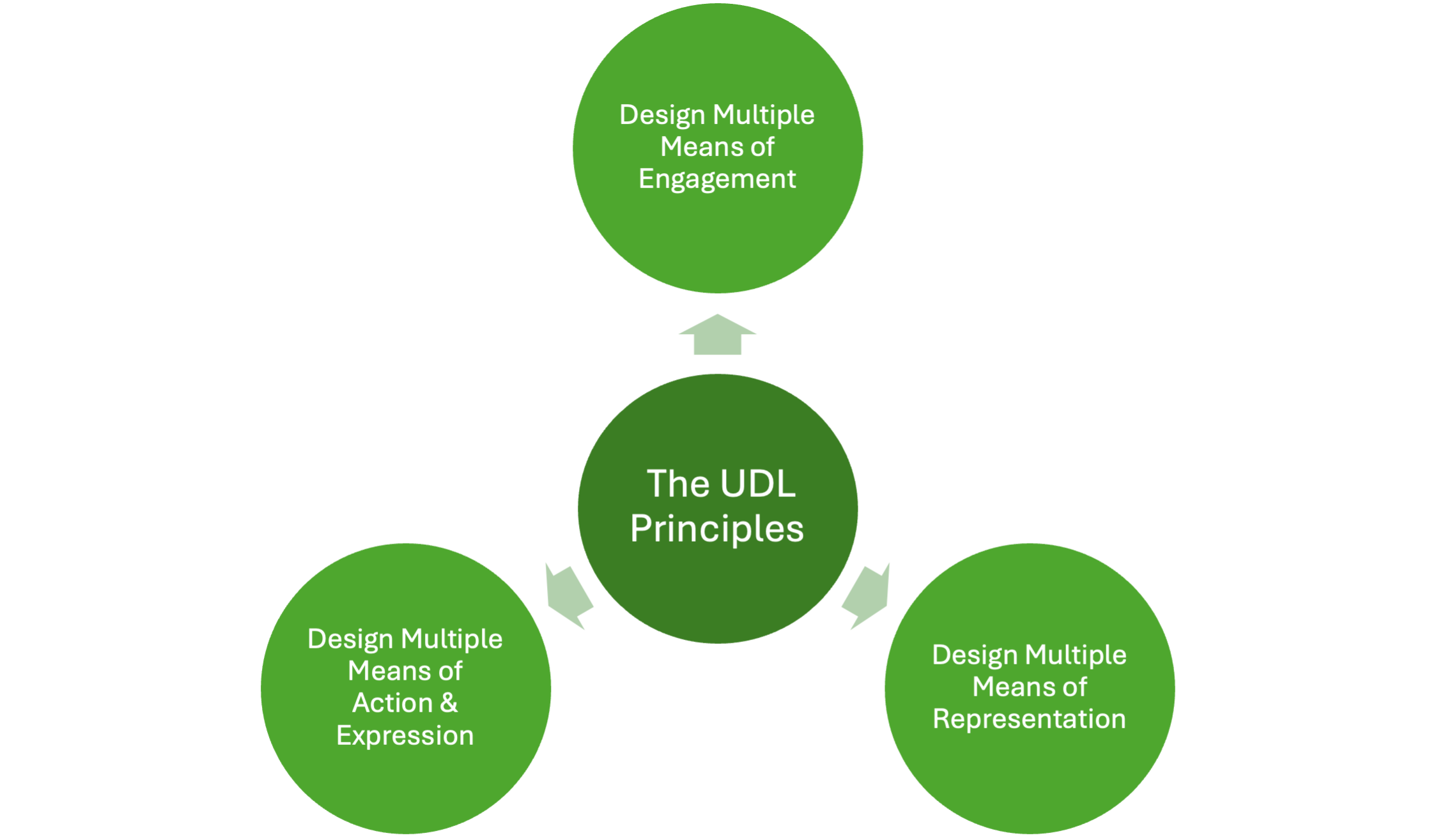1.1 Introduction to UDL
Universal Design for Learning (UDL) is a framework that promotes equity and inclusivity in the design of courses and learning environments, ensuring that barriers to learning are minimized for all learners. UDL originates from Universal Design (UD), which is a set of principles that guides the design of architecture and products that can be used by the widest range of individuals possible: all ages, abilities, characteristics and life stages (Institute for Human Centered Design, 2016). Both UD and UDL share a common objective of universal access, but in different contexts; UD focuses on the “built” environment whereas UDL is expressed in learning environments (Pisha & Coyne, 2001).
Proponents of UDL recognize that overly rigid educational approaches can create fundamental obstacles to learning. UDL involves incorporation of a variety of approaches to engage learners in a flexible curriculum that acknowledges and honours the variability of all learners.
At its foundation, UDL prompts us to consider the complex factors of learning, including the educator’s decisions in course design, students’ motivations for learning, and the learning environment. The UDL framework emphasizes flexibility in how instructional material is presented, how students demonstrate their knowledge and skills, and how they are engaged in learning. It is informed by environmental design, but also by cognitive neuroscience, learning theory, and teaching practice. This framework is often presented via the three principles of UDL:
- Design multiple means of engagement:
- This includes options for welcoming interests and identities, effort and persistence, and emotional capacity.
- It is often referred to as the “why” of learning.
- Examples: open class discussion, question and answer period, applied problem solving, goal setting, etc.
- Design multiple means of representation:
- This includes options for perception, language and symbols, and building knowledge.
- It is often referred to as the “what” of learning.
- Examples: Video, audio, graphics, symbols, tactile objects, etc.
- Design multiple means of action and expression:
- This includes options for demonstration and sharing of learning through interaction, expression, and communication, and strategy development.
- It is often referred to as the “how” of learning.
- Examples: Written assignments, multimedia presentations, group projects, concept maps, etc.

We will examine these three principles in greater depth in the following parts of this chapter, and how they offer specific strategies for creating inclusive, accessible learning environments. The UDL framework also helps educators address systemic barriers and inequities in education, ensuring all students have equitable access to learning opportunities.
While the UDL principles might be simplified as the “why, what, and how” of learning, it’s important that the “who” of learning be woven throughout by recognizing and embracing learner diversity and individual identity. The “who” refers to the unique backgrounds, cultural contexts, and personal experiences that shape how each learner approaches their learning. When the “who” of learners is truly appreciated, it acknowledges that learning is influenced by identity and personal experience, and also that individual, institutional, and systemic biases can be barriers to learning. By integrating the “who” into UDL, educators ensure that the “why, what, and how” of learning is accessible, and culturally and contextually relevant. Furthermore, when the “who” is seen as integral to learning, barriers to learning are more easily identified, and work can be started to dismantle those barriers.
Although much work needs to be done in higher education in understanding UDL, the framework holds a great deal of promise. Educators who incorporate the three principles of UDL into their courses tend to hold certain beliefs about teaching and learning, such as the following:
- They acknowledge there is a diversity of students in their classes.
- They believe that all students have the same right to higher education.
- They aspire to creating equitable access to learning for all students in their classes.
The following video offers a quick overview of UDL.
Web Resources
The Center for Applied Special Technology (CAST) developed nine “Guidelines”, accompanied by 36 “Considerations”, that illustrate the three UDL principles: The UDL Guidelines 3.0
Learning Outcomes
By the end of this chapter, you should be able to:
- Recognize the three principles of the universal design for learning (UDL) framework.
- Discuss the potential teaching and learning benefits of UDL approaches.
- Identify different ways to engage students in learning, and foster learner agency, self-regulation, and emotional well-being (design multiple means of engagement).
- Identify options for presenting information, content, and learning materials in varied and accessible ways (design multiple means of representation).
- Identify multiple routes for students to demonstrate their learning while also encouraging the development of executive functions such as goal-setting, organizing information, and managing time (design multiple means of action and expression).
- a) Analyze course design, development, and delivery elements for potential barriers to learning, and
b) Apply UDL principles to reduce/eliminate those barriers.

